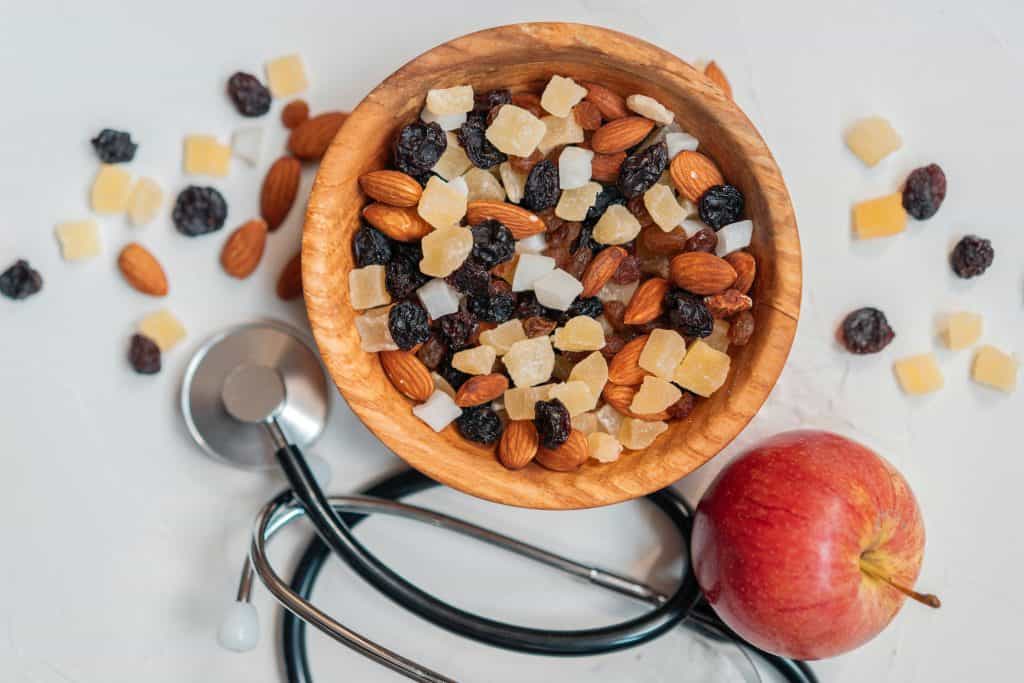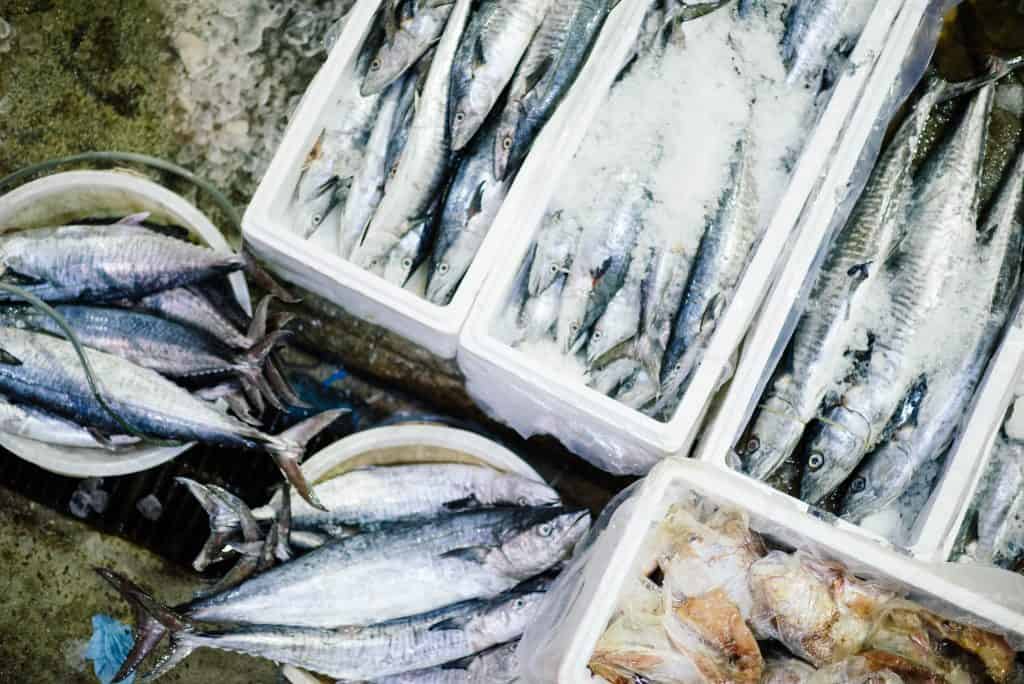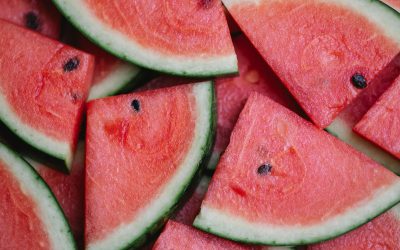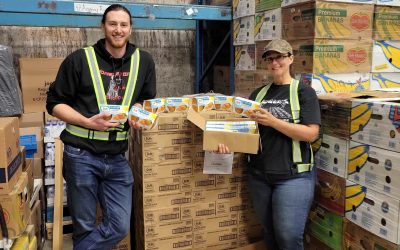Food insecurity is on the rise in Canada. Since the pandemic, one in seven Canadians struggles to access good, healthy food. If a person is food insecure and experiencing hunger, filling their belly is the first and most basic human priority. One can only hope that the food that they eat is healthy and full of nutrition, but all too often, that is not the case.
For March’s National Nutrition Month, we’re diving deep into the link between food insecurity and nutrition in Canada. If millions of Canadians can’t afford to eat or buy groceries, it will be a struggle to eat a well-balanced, nutritious diet.
This is an important conversation at a pinnacle moment. “The affordability of food is a growing challenge,” explains Krish Thayalan, Registered Dietician and Community Programs Coordinator at Second Harvest. “The cost of food is projected to increase by up to 5% through 2021, especially for healthier items like fresh fruit, vegetables, and proteins.”
We had the pleasure of speaking with two subject-matter experts in northern and southern Canada on how big of an issue food nutrition is in our country—and what we can do about it.
Meet our Food Nutrition Education Experts
Mabel Wong is the Senior Nutrition Advisor to the Office of the Chief Public Health Office in Canada’s Northwest Territories’ (NWT). As a registered dietitian and health educator, she gives guidance to programs, including those at Second Harvest, that are involved in nutrition education, especially in northern communities.
Krish Thayalan is the Community Programs Coordinator at Second Harvest in Toronto, Ontario. He develops and presents education and training programs around food waste prevention and food nutrition literacy. Krish also runs the Feeding our Future program, providing summer camp lunches for over 2,000 kids every summer, and manages over 300 Toronto-based social services agencies that feed those in need.

Food Insecurity and Nutrition in Canada
“Human nutrition, in broad terms, is the science of how food affects human health—physically, mentally, and emotionally,” explains Mabel Wong. “If we simply define food insecurity as a lack of access to available, affordable, and acceptable food, then there is a very strong link between food insecurity and nutrition. Lower quantity and quality of food reduces human health.”
According to Krish Thayalan, food insecurity is a recognized social determinant of health and has a direct impact on nutrition. The Centre for Studies in Food Security at Ryerson University looks at food security by availability, accessibility, adequacy, acceptability, and agency.
There is no shortage of available good, healthy food in Canada. In fact, 11.2 million metric tonnes of edible, potentially recoverable food is lost or wasted all across the food supply chain. Krish believes that the issue lies in “accessibility: providing the physical and economic means to have food at all times, and adequacy: providing safe, nutritious food that is produced in environmentally sustainable ways.” Second Harvest helps to decrease some of these barriers by diverting and redistributing good food that would otherwise go to waste.
“The average Canadian’s diet, especially those who are low-income and/or marginalized—through no fault of their own—is full of energy-dense foods with little to no nutrient value, giving rise to chronic disease,” says Krish. “People rely more on cheaper, convenience-foods that are low in important vitamins and minerals, and high in salt, sugar, and saturated fats to keep themselves nourished as a result. The lack of nutrition in these diets can then lead to a myriad of chronic diseases like diabetes and heart disease, which in turn affects people’s ability to make a living. And so the cycle continues.”

Nutrition education resources
For both Mabel and Krish, part of the solution to poor nutrition has always been education.
“The more knowledgeable and skilled people are on making healthier food choices, the better the outcomes for good health,” says Mabel. In the north, people always say that fresh fruit and vegetables are way too expensive. But she argues that fresh isn’t the only form of healthy food and, in some cases, is less nutritional than frozen or dried.
“Fresh isn’t always the best nutritional value because it’s picked before peak-ripeness and nutritional value and shipped long distances,” Mabel explains. Frozen and dried food, such as dried beans and lentils or frozen fruit and vegetables, are harvested at their peak and, in many cases, are higher in vitamins and minerals than their fresh counterparts. Sun dried tomatoes, as an example, are just as nutritional as fresh, but they’re lighter and easier to ship long distances—and they won’t lose Vitamin C or go bad during delivery.
For those on a limited budget, Krish suggests reading nutrition fact tables. Look for items with 5% or less of your daily limit of sodium or saturated fats and over 15% of your daily fibre, vitamin A, calcium or iron needs.
But as Krish says, “we would be remiss to assume that providing people with knowledge is enough to change their dietary patterns. In reality, this is a systemic issue in which Canadians do not have access to food that is nutritious, dignified, or culturally acceptable. The food is there, but the question is how can we make sure people can access it?”

Solutions to a Systemic, Growing Problem
In the NWT, every school has a free food program. There are Collective Kitchens, Nutrition North Canada’s nutrition education program, and local initiatives offered by community governments including financial support for hunting and fishing.
- In 2020 alone, Second Harvest rescued and redistributed a record 10 million kilograms of food to Canadian agencies and local communities in need.
- PROOF: An international group of researchers focused on food security at a policy level.
- Food Rescue in Yellowknife: Non-profit feeding NWT communities in need of good food.
- In 2008, NWT Legislative Assembly passed the Donation of Food Act (2008) which enables businesses and organizations to donate and distribute good food to the community: Start a food rescue in your NWT community.
- Basic Shelf Cookbook by the Canadian Public Health Association: 10 free recipes online and the cookbook has been widely distributed in NWT communities.
- Reach out to your neighbours, local community centres, agencies, and neighbours—and read more on the topic here.





